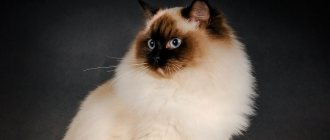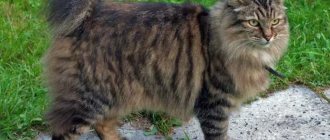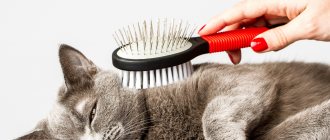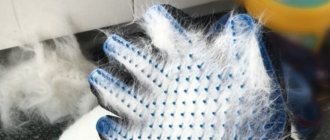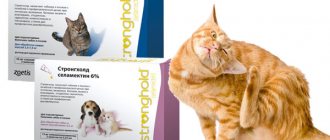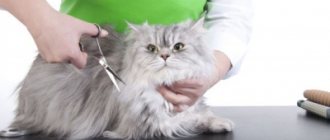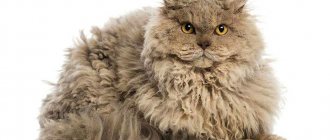Photo: UGC Check what cat breeds you know. For a modern person, a cat is a family member, an antidepressant, a fluffy pillow and a soothing purr. If you have not yet adopted a handsome cat or a graceful cat, then study the breeds and select a foster.
In world culture, a cat is associated with comfort, home warmth and a pleasant, calm atmosphere, beauty and grace. The cat breeds, photos of which we offer to study, are the most popular pets.
Most people strive to buy a noble, purebred cat with a good pedigree. Such animals cost a lot of money. Therefore, before you dare to make such a purchase, study all the breeds of cats that are popular and their characteristics. Thanks to this reasonable approach, you will not have any hassle in the future.
Before buying a cat, you need to take care of food, clothing and many other small things. The online pet store ZooTovary.kz will help you cope with this.
Do you know what cat breeds are on the market? The catalog will help you navigate. Cats, photos of which are presented below, are a true decoration of the house:
Angora (Turkish) longhair
An Angora or Turkish cat is a reliable friend. Angora is a medium-sized cat. An adult weighs up to 5 kg and reaches 30 cm in height at the withers. They have long hair with thick down. Cats live up to 20 years.
Photo: pixabay.com: UGC
Origin
This is one of the most ancient breeds along with the Egyptian Mau, Serval and Caracal. In ancient times, their habitat was the Byzantine Angara (Ankara). Hence the modern name of the breed.
Angora kittens came to Europe in the 15th century thanks to the knights. Later, merchants began to import them. In the 20th century, the breed was on the verge of extinction. The breed was preserved by enthusiasts: the Angora was declared a national treasure of Turkey and an export ban was imposed.
Appearance and character
Angoras are graceful snow-white beauties with semi-long hair and heterochromia - multi-colored eyes. The fluffy and soft hair on the neck forms a collar, on the hind legs there is a riding breeches, and on the tail it looks like long ostrich feathers.
The classic color of the Angora cat is white, but at the beginning of 1994 other colors were approved at the international level. Angora cats are smart, inquisitive, sociable and active.
Care
Despite the special density and length of the coat, Angoras are unpretentious in care. The owner only needs to brush the pet twice a week with a special brush, bathe it once a month using a special shampoo, and perform eye and ear hygiene.
Popularity of ginger cats
Animals with fiery fur have been popular at all times, but now it’s a real boom. They are featured in advertisements, and cartoons are made about them that people like. For example, the same Garfield leaves neither children nor adults indifferent with his constant pranks. Or Puss in Boots from the cartoon about Shrek. His bottomless eyes and wit make millions of people and children around the world smile.
Among creative individuals there are also lovers of fiery animals. They are also painted in paintings, figurines are made, and soft toys are sewn. For example, the contemporary Russian artist Vasya Lozhkin has a whole series of works about red cats.
1111
Redgall
Representatives of the Redgall breed charm with their easy-going nature, kind disposition and elegant color. Redgall cats can weigh up to 12 kg, female cats are three times lighter - up to 4 kg. Cats grow up to 4 years old and grow up to 1 m in length.
Photo: pixabay.com: UGC
Origin
The breed appeared in the early 1960s. in the USA thanks to the efforts of breeder Anne Baker. Redgalls were bred by crossing Persians and Burmese cats that are white and interspersed with black. The breed was recognized in 1993.
Appearance and character
The standard color of the breed is light with a dark muzzle, paws, ears and tail. Cats of this breed have a round muzzle, slanted, expressive oval eyes (blue only) and straight ears. The long hair is collected in a collar on the neck, between the claws. A distinctive feature is a long fluffy tail.
Translated from English, Redgall means “rag doll”: when the cat falls into the hands of a person, it goes limp, becomes pliable and relaxed. There is a danger in this property of the breed: a red goll can fall and get injured because it does not have time to group itself. He is easy to train, not vindictive and not annoying.
Care
The long hair of the Red Goll does not require special care: brush once a day. Try to refrain from bathing, because these cats hate water. They are unpretentious in food, but need a balanced diet. Red golls have a weak heart, which can cause sudden death, and are prone to hip dysplasia.
Care, maintenance, health
The care and maintenance of animals with a red color have no distinctive features from cats with a different coat color. It all depends on the characteristics of specific breeds, but if the pets are of “yard” origin, regular checks at the veterinarian, good nutrition and the love of their owners are what will make them happy.
There is a relationship between color and some features of the cat’s body. For example, it is known that whites are prone to hearing loss and are often naturally deaf.
As for redheads, some experts believe that they tolerate anesthesia somewhat worse during operations. But this is not a proven scientific fact.
Nibelung
Muscular and lean Nibelungs are a godsend for active people. They are active, affectionate and sociable. These cats gain up to 6 kg of weight (females - up to 4 kg), have a luxurious coat, and the cats are fluffier than males.
Photo: pixabay.com: UGC
Origin
Representatives of this breed are indirectly related to the “Song of the Nibelungs”. The first representatives received from the owners the names of the main characters of this saga. They were born in the early 1980s. in the USA as a result of crossing a long-haired yard cat with a Russian blue cat.
Appearance and character
The main feature of the Nibelung is its luxurious smoky coat and emerald eyes. These are smart and restrained cats in their displays of emotions. Their distinguishing feature is responsiveness. They become attached to one of the owners, pay attention to him, but do not get bored.
Care
Nibelungs need to be brushed regularly and bathed as needed using a special shampoo. Pay special attention to your pet’s teeth: brush and buy special food that will remove tartar.
Genetics of red color
The red, or more correctly red, shade of an animal's coat depends on the presence of the Orange gene or simply O. It is located on the X chromosome, and therefore cats with this color are more common than cats. The presence of this mutation, which is dominant, leads to the fact that the body begins to produce the pigment pheomelanin, which leads to a red color.
Its peculiarity is that it is never solid, forming a bizarre pattern, spots and stripes on the pet’s fur coat.
If the recessive diluent d has entered the animal's genome, the color of the cat will change from red to cream. Another feature of the Orange gene is that when it is present on both X chromosomes (heterozygous state), the kitten acquires tortoiseshell fur. Since the gene is located on a specific chromosome, it is possible to predict the coat color of future kittens based on the color of the parents.
People will be born red if:
- Mom is red or cream, and dad is black or gray. Ginger cats and tortoiseshell cats will be born.
- Both parents have a red tint to their coat.
- Mom is black, and dad is red - the cats will take after their mother, and the cats will turn out to be tortoiseshell in color.
Exotic (exotic shorthair)
Exotics have soft, plush fur and a flattened nose, which adds to their charm. These short-haired cats gain up to 7 kg in weight and grow up to 30 cm at the withers.
Photo: pixabay.com: UGC
Origin
The breed was selectively bred in the USA in the 1960s. Appeared as a result of crossing Persians and cats with short hair. The professionals were disappointed with the result, but the public liked the thick-footed cats with a sweet face.
Appearance and character
Exotics are distinguished by a massive body (wide chest and powerful paws), a flattened muzzle, huge, bulging eyes, stockiness and external clumsiness, plush fur. The color can be monochromatic, bicolor and tricolor.
Softness and pliability prevail in behavior. They love to play outdoor games, so small children are their passion. They are prone to depression and may refuse to eat if the owner has left somewhere.
Care
Be sure to take care of a separate sleeping place - a warm house or bed. Place them away from drafts. Perform standard hygiene procedures regularly and ensure that gingivitis does not develop.
Toy bob
- Lifespan: 14-15 years
- Temperament: loyal, playful, charming, playful, intelligent, curious
- Color: any
- Size: no larger than a 3-6 month old kitten
The Toy Bob is one of the smallest cat breeds. However, unlike many toy breeds, it is not a miniature version of a larger breed. On the contrary, it is a unique breed with Russian roots .
The first documents about these cats were obtained in the 1980s by the Cat Fanciers Association. The Toy Bob is considered a loving, loyal, intelligent and sociable cat that will get along with all family members, including children and even dogs. In addition, the Toy Bob is a good climber and a cuddler.
Thai cat
Thai cats are the heroes of Siamese manuscripts of the 14th century. Small (up to 6 kg) short-haired cats with an original color are a decoration for the home.
Photo: pixabay.com: UGC
Origin
Noble and graceful Thai cats are residents of Buddhist temples and imperial palaces. They appeared in Europe thanks to the British in the 19th century. Only aristocrats and very rich people bought cats of this breed. Several Thais lived at the court of Queen Victoria, but the breed received recognition only in 1990.
Appearance and character
Distinctive features of the breed are a muscular body, a round head, round azure eyes and fine fur. The common feature of Siamese and Thais is their color point color (fawn, bluish or cream with chocolate markings on the face, ears, paws and tail).
Thai cats respond to affection with affection, but will turn into vindictive and aggressive pussies if you hurt them. They are hyperactive and inquisitive, so precautions should be taken. The hunting instinct is developed.
Care
Doesn't require any special tricks. Provide your cat with a scratching post and a tray with high sides (Thais actively scoop up feces). Watch the spine: knots on the tail and back indicate deformation, which causes pain to the cat when stroking.
Serengeti
- Lifespan: 10-15 years
- Temperament: active, lively, affectionate, loyal, sociable, vocal
- Colour: Striped, silver, golden, grey, with spots and leopard markings
- Height: up to 60 cm
- Weight: 6.8-10 kg
- Comparable breed: Serval
Unlike the Highlander, the Serengeti can already officially compete in championships because they have received the appropriate status from the International Cat Association. The Serengeti was developed by crossing the Bengal and Oriental Shorthair breeds.
This cat began to be bred in the 1990s in an attempt to produce a domesticated wild serval . The Serengeti has a spotted body, long legs and large ears. The male is usually larger than the female. These felines are highly athletic and are known for their loyalty, energy, and agility. They are able to create strong bonds with people.
Neva Masquerade
The masquerade of a beautiful fluffy cream-colored cat is given by special dark markings on the face. Cats of this breed are large (7–10 kg) and have long hair.
Photo: pixabay.com: UGC
Origin
The breed is the result of crossing a Siberian cat with a Persian and a Siamese. Thanks to this, the cat received long hair and a color point color. The breed was bred by St. Petersburg breeders in 1989, but did not receive international recognition.
Appearance and character
Representatives of the breed are large animals with a trapezoidal head, round, large blue eyes, massive paws and a long, bushy tail. The Neva Masquerade has long hair. These cats are affectionate, but do not tolerate familiarity. They are friends with children and pets.
Care
Pay special attention to the coat, especially during the shedding period (occurs twice a year): you will need a brush. Bathe your masquerade no more than three times a year.
Wild red cat – Caracal
This is a species of wild medium-sized cat that lives in steppes and deserts and is predominantly nocturnal. It is not recommended to have one in an apartment due to the love of freedom and large size.
The best option is a private house with a large enclosure for outdoor walks.
Caracals are very large animals, reaching a length of 85 cm and a height of up to 45 cm. The tail is short and mobile, ears with tassels at the ends are set high.
The coat color is red ticked (red), it is thick, dense and quite tough. Animals have good immunity; with proper care, they rarely get sick.
You can buy it only in nurseries that breed caracals, the price is approximately $10,000.
Munchkin
Munchkin is a cat, the heroine of the novel “The Wizard of Oz” by Lyman Baum. This is a breed of dwarf semi-longhaired cats. The height at the withers of the animals reaches 16 cm, and the weight is no more than 4 kg.
Photo: pixabay.com: UGC
Origin
Scientists found mentions of the breed in records of the 19th century; munchkins were registered in the early 1980s. Then the foundling cat (Louisiana) gave birth to cute short-legged cats, and later it was proven that this miniature is the result of mutations. The breed received recognition in 1995.
Appearance and character
The elongated body, short legs, wide head, pointed downward, expressive almond-shaped eyes of munchkins have become a reason for comparison with dachshunds. These cats often have heterochromia, a variety of colors, rare - chocolate and marbled.
Videos about cats of this breed will show how friendly and playful they are. Cats love walks and walk easily on a leash.
Care
To the usual hygienic procedures (combing, cleaning ears, teeth and eyes), add dietary control. Munchkins should not be overfed.
Tennessee Rex
- Lifespan: 14-16 years
- Temperament: affectionate, sociable, quiet
- Colour: orange-cream, red and white with satin effect
- Weight: 3-5 kg
The Tennessee Rex, discovered in 2004, is the result of a natural mutation. Franklin Whittenburg of Tennessee had a stray cat who once gave birth to kittens, two of which were unusual. Due to a genetic mutation, these kittens had curly, satiny fur. The International Cat Association recognized the Tennessee Rex as a breed in 2009, although they have never made it to the championship level.
The Tennessee Rex is a very loving cat that enjoys spending time with family members. She loves to cuddle and lie on your lap. They are quiet cats, although they can make a little noise when hungry. But keep in mind that they need time to adapt to their new environment.
Chartreuse
A blue shorthair cat with unique behavioral skills is a treasure of France. Chartreuse wins hearts at first sight with its aristocratic manners and sophisticated appearance. Cats of this breed gain weight up to 9 kg with a height of 30 cm at the withers.
Photo: pixabay.com: UGC
Origin
In the 13th century, the breed was selected by the monks of the Catholic monastery of Grande Chartreuse. In 1928, the breed was officially registered. During the Nazi occupation of France, the Chartreuse was on the verge of extinction. After the war, the breed was restored.
Appearance and character
These are large cats with a trapezoidal head, round cheeks that form a smile - a distinctive feature of the Chartreux. The eyes are orange or yellow, the coat is blue, shimmering with silver. The nose is graphite, and the paw pads are gray-pink.
These cats are lazy. They love to lie down more than play. They tolerate loneliness well. They exhibit the habits of dogs: they can lie in front of the door for hours waiting for the owner. They rarely speak in a quiet voice, like a whisper.
Care
The breed is prone to obesity, so watch the diet and periodically arrange a diet. Pay special attention to the condition of your teeth. Chartreuse's gums often become inflamed.
Napoleon
- Lifespan: 9-15 years
- Temperament: sociable, playful, flexible, gentle, active, energetic
- Coloring: all colors and patterns
- Height: 17.8-20.4 cm
- Weight: 2.3-4.1 kg
- Comparable breed: Munchkin, Persian cat
Also known as the Minuet, the Napoleon breed is a newly introduced species of dwarf cat. These felines are named after Napoleon Bonaparte due to their short stature.
Joe Smith created the breed in 1996 after crossing a Munchkin with a Persian cat. He later improved the breed using genes from exotic shorthair cats. The International Cat Association recognized this breed in 2011.
Napoleon is a loving, sweet and calm cat breed. She loves all family members and will easily communicate even with strangers. Napoleon can live happily with other cats and dogs. He needs a lot of active play, otherwise excess energy can negatively affect his behavior.
Himalayan cat
Persian color point is the second name of this breed. The cats combine the features of Siamese and Persians, grow up to 30 cm at the withers and gain up to 6 kg of weight.
Photo: pixabay.com: UGC
Origin
Despite the name, the breed has nothing to do with the Himalayas. It was bred by American breeders in the 1950s. It acquired the name because of the specific color that is characteristic of Himalayan rabbits.
Appearance and character
Photos of cats indicate the main characteristics of the breed: lighter body color and dark pigmentation of the face, ears, paws and tail, flattened nose and long hair, bright blue eyes. Character traits - curiosity, love of love, measured movements, calm character. Very attached to family.
Care
The cat's fur requires special care, so you should brush your cat regularly, and also wash your eyes with a cotton pad soaked in water. Watch your diet because Himalayans are gluttons.
Furry breed categories
Cat breeds receive official recognition after passing certification in one of the felinological communities. Animals receive metrics, pedigree and documentary evidence of origin. The exterior must comply with the breed standard. Only a complete package of documents gives the right to selection and participation in exhibitions.
There are more than 700 special species of cats in the world, but international organizations recognize only a few dozen:
- FIFe (World Cat Federation) recognizes 42 breeds.
- European WCF - 70 breeds;
- American CFA Association - 40 breeds.
Breeding work is ongoing, so some resistant phenotypes will periodically receive official recognition.
According to FIFe
According to FIFe, furry varieties include categories I and II, which include the following breeds:
- American Longhaired Curl.
- Balinese cat.
- Burma.
- British.
- Himalayan cat.
- Maine Coon.
- Neva Masquerade.
- Norwegian forest.
- Persians.
- Ragdoll.
- Siberian cat.
- Turkish Angora.
- Turkish van.
- Exotic.
Ragdoll
According to WCF version
According to WCF, furry cat varieties include breeds of categories 1 and 2:
- Long-haired Burmilla.
- Karelian Bobtail
- Kurilian Bobtail.
- Laperm.
- Munchkin.
- Nibelung.
- Oriental.
- Ragamuffin.
- Selkirk rex.
- Somali cat.
- Tiffany.
- Ural rex.
- Highland fold.
- Japanese Bobtail.
Ragamuffin
According to CFA
The CFA recognizes the same cat species as the WCF and FIFe with the exception of: American Bobtail, Ojos Azules, Pixie Bob.
Scottish Straight (Scottish Straight)
Direct relatives of Scottish Fold cats. Their calling card is their cheerful disposition and plush fur.
Photo: pixabay.com: UGC
Origin of the breed
In the 1960s It turned out that Scottish Folds cannot be crossed with their own kind (there are many genetic mutations). But there were straight-eared Scots in the litter. They had fewer deviations. Their “marriages” with fold-eared animals produced healthy offspring. Therefore, Scottish Straights were identified as a separate breed.
Appearance and character
Medium-sized cats (up to 6 kg) with powerful paws, a round head and thick cheeks, a short nose and straight ears. The eyes are amber or orange, slightly convex. They have short hair with thick down. They come in different colors: marbled, lilac, chocolate, cream, white, etc.
In everyday life, Scottish Straights are affectionate, unpretentious and good-natured. They don’t like to sit on their hands and be ironed, they are afraid of heights. They do not like changing their place of residence.
Care
They do not require labor-intensive care. The condition of the eyes and ears requires attention. Clean and wipe them regularly. Scottish Straights are gluttons, so watch the menu and portion sizes.
Cat breeds with photos are a visual aid for those who are looking for a devoted friend. Take a closer look, perhaps among the presented beauties there is a dream cat, a friend cat and a gentle companion. Bring joy to your home - choose a cute purr.
Mr. Cat recommends: character traits of ginger cats
The character of ginger cats of street origin can vary greatly. Some of them are easy-going and calm, others are restless and playful. But there is one common feature that unites all animals with a fiery color - cunning. Even at an early age, they use this character trait to win the love and affection of their owner.
Often cats with this coat color are literally forced to be taken into their home.
People have noticed a special relationship between the coat color and eye color of a pet with its character:
- the green color of the eyes indicates the cat’s cheerful disposition and tireless energy, which infects everyone around him;
- yellow or copper shade of the iris - a calm and balanced couch potato, whose favorite pastime is relaxing in a comfortable place, for example, an armchair or sofa.
- Blue eyes in such cats are quite rare. It can occur in pets with spots of a red tint, but is never found with a solid red color.
There are many legends and signs associated with ginger cats and cats. One of them: if you adopt a pet with a fiery color, it will bring happiness to the family, and the larger the food bowl you give it, the greater the well-being and prosperity there will be in the house. Read more about signs associated with red cats on our portal.
Toyger
- Lifespan: 10-15 years
- Temperament: affectionate, sociable, easy to train, intelligent
- Colour: red or brown with dark vertical stripes
- Height: 23-33 cm
- Weight: 3.2-6.8 kg
- Comparable breed: Bengal cat
The Toyger is a designer breed, which means that breeders deliberately designed its body markings. They set out to create a tiger-like domestic cat , and they certainly succeeded. But despite its resemblance to a tiger, this domestic cat is known for its affectionate disposition and loyalty to all family members of all ages, two-legged and four-legged.
These short-haired tabby cats were first bred in 1980. The International Cat Association recognized the Toyger in 2007, although other registries do not officially recognize the breed.
Pink cat eye manicure
Soft pastel or bright pink is perfect for the warm season, young girls and a romantic, carefree mood. Manicure using the cat's eye technique adds lightness to the color, refreshes, makes the colors more vibrant and bright. It is permissible to apply the following solutions:
- liquid stones;
- crystals, rhinestones, half beads;
- combine with elegant floral and openwork patterns;
- add contrasting tones - blue, yellow, bluish, white, black, purple and lavender strokes.

